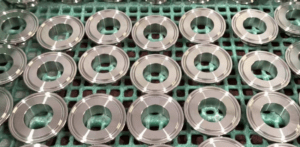Many of our customers have such a question: Is Hastelloy a super alloy? As a matter of fact, the question of whether Hastelloy qualifies as a super alloy is not a simple one to answer, as it requires a thorough understanding of the alloy’s composition, properties, and applications. In this article, we will offer a detailed and authoritative analysis of Hastelloy, exploring its characteristics and the nuances surrounding its classification.

Is Hastelloy a super alloy?
To begin, let’s define what a super alloy is. Super alloys are a class of high-performance alloys that exhibit exceptional mechanical properties, particularly at elevated temperatures. They are typically composed of complex mixtures of metals and alloys, designed to withstand extreme conditions and maintain their structural integrity under demanding operational environments. Nickel-based super alloys are particularly renowned for their ability to retain strength and resistance to oxidation and corrosion at high temperatures.
Now, turning our attention to Hastelloy, we find an alloy with a unique composition and a set of properties that make it stand out in its own right. Hastelloy is primarily a nickel-molybdenum-chromium alloy, with the addition of other elements such as tungsten, cobalt, and iron. Its composition is tailored to provide exceptional resistance to corrosion in highly acidic and oxidizing environments. This makes Hastelloy a prime choice for applications in chemical processing, pulp and paper production, and oil and gas refining, where exposure to corrosive chemicals is common.
However, the question remains: does Hastelloy’s corrosion resistance and other properties qualify it as a super alloy? The answer is not straightforward. While Hastelloy does exhibit some of the characteristics associated with super alloys, such as good mechanical properties and resistance to high-temperature oxidation, it is primarily known for its corrosion resistance rather than its high-temperature performance.
Super alloys are typically associated with materials that can maintain their strength and ductility at temperatures far exceeding those encountered in most industrial applications. Hastelloy, on the other hand, is more renowned for its ability to withstand corrosive attack in a wide range of chemical environments. This focus on corrosion resistance, rather than high-temperature performance, is what distinguishes Hastelloy from traditional super alloys.
That said, it is important to recognize that the classification of alloys is not always rigid or absolute. The term “super alloy” is itself a general designation that can encompass a wide range of alloys with exceptional properties. While Hastelloy may not fit the strict definition of a nickel-based super alloy used in extreme high-temperature applications, its unique corrosion resistance properties certainly place it in a class of high-performance alloys.
Conclusion
In conclusion, Hastelloy is a remarkable alloy with exceptional corrosion resistance, making it an ideal choice for specific industrial applications. While it may not strictly fit the definition of a traditional super alloy in terms of high-temperature performance, its unique properties and applications certainly justify its recognition as a high-performance alloy. The classification of alloys is often subjective and depends on the specific context and application. Therefore, it is more accurate to view Hastelloy as a specialized alloy with exceptional corrosion resistance rather than strictly as a super alloy.
Thank you for reading our article and we hope it can help you to find the answer to the question: Is Hastelloy a super alloy? If you are looking for Hastelloy alloy suppliers online now, we would advise you to visit Huaxiao Alloy.
As a leading supplier of Hastelloy Alloys from Shanghai China, Huaxiao Alloy offers customers high-quality Hastelloy C22, Hastelloy C276, Hastelloy C2000, and Hastelloy B2 at a very competitive price.



